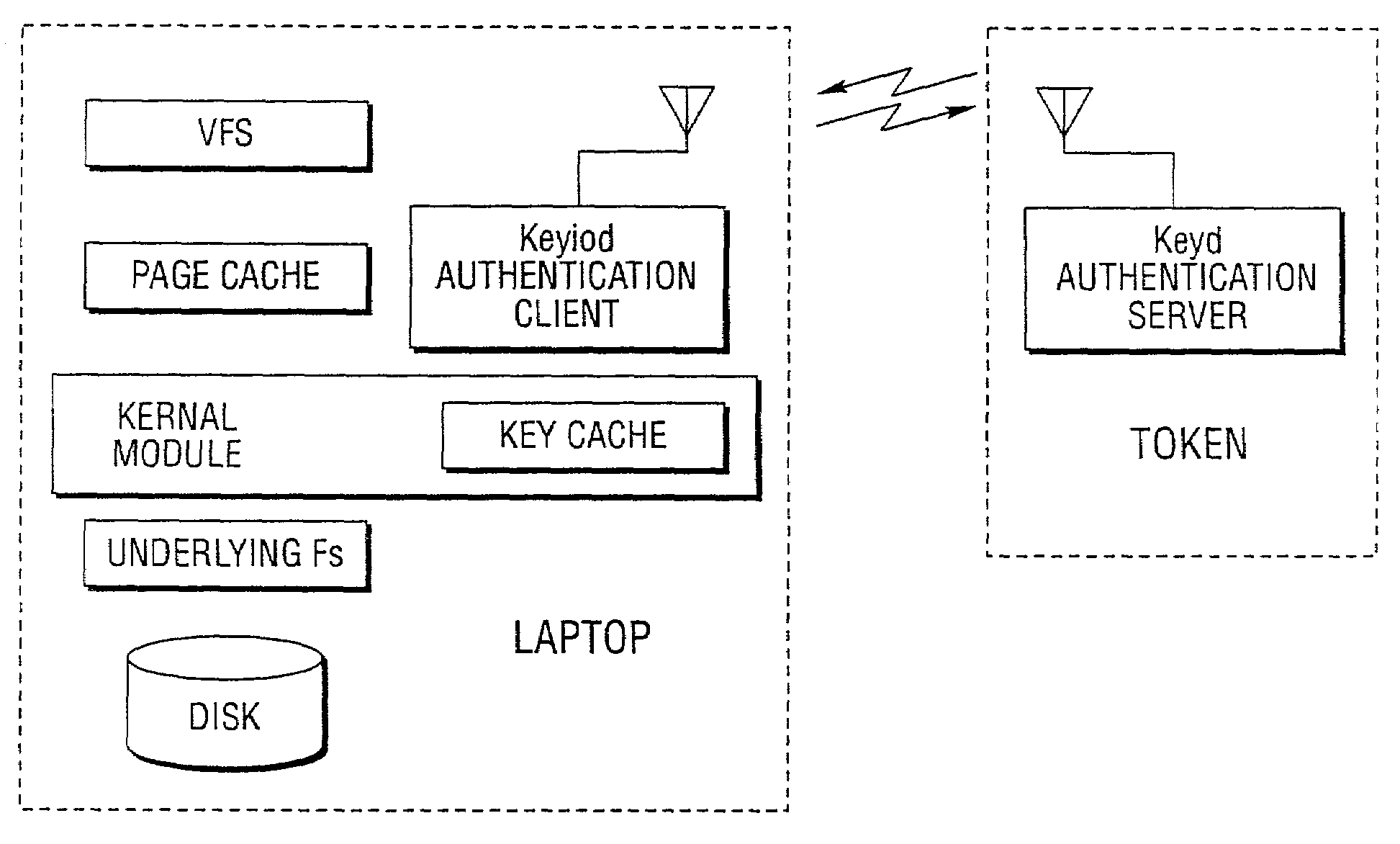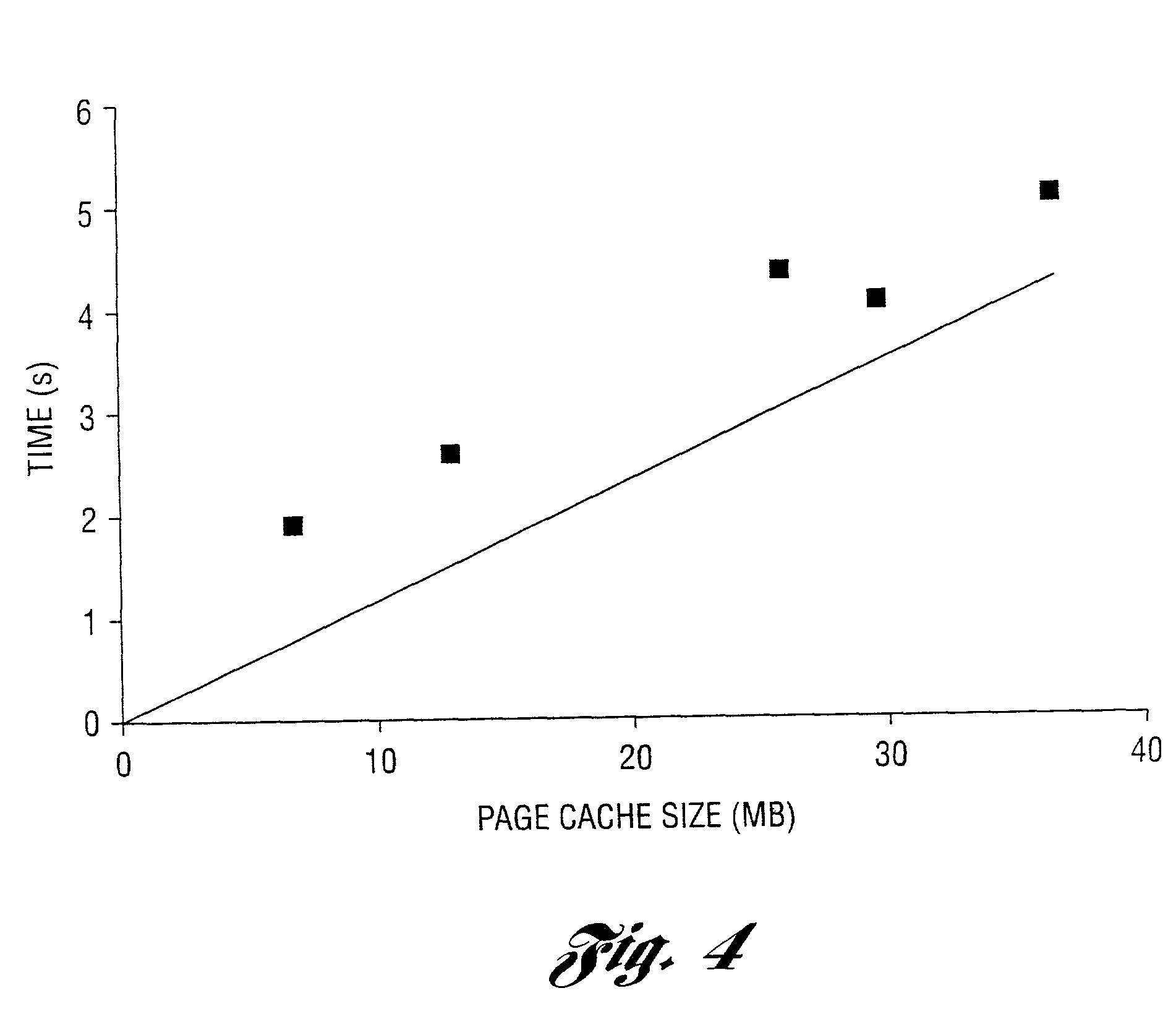Method and system to maintain portable computer data secure and authentication token for use therein
a portable computer and secure technology, applied in the field of methods and systems to maintain portable computer data secure and authentication tokens for use therein, can solve the problems of increasing the likelihood of exposing sensitive files, storing laptop data in a cryptographic file system does not fully address this problem, and the inability to reestablish the user's identity too intrusive, so as to minimize the performance impact on the user's return, the effect of reducing the risk of loss
- Summary
- Abstract
- Description
- Claims
- Application Information
AI Technical Summary
Benefits of technology
Problems solved by technology
Method used
Image
Examples
Embodiment Construction
[0047]A primary goal of the method and system of the present invention is to provide encryption in a way that neither affects performance nor burdens the user. All on-disk objects are encrypted for safety, but all cached objects are decrypted for performance. With its limited hardware and networking performance, the token typically is not able to encrypt and decrypt file pages without significant performance penalty. Instead, the file keys are encrypted and stored on the laptop's disk. Authorized tokens possess the ability to decrypt file keys on demand. Steps are taken to either overlap key acquisition with disk I / O, or move it out of the critical path. When the user is out of range, the invention encrypts cached objects for safety. These encrypted pages are retained in the cache to minimize recovery time when the user returns.
Trust and Threat Model
[0048]It is assumed that some collection of users and laptops belong to a single administrative domain, within which data can be shared...
PUM
 Login to View More
Login to View More Abstract
Description
Claims
Application Information
 Login to View More
Login to View More - R&D
- Intellectual Property
- Life Sciences
- Materials
- Tech Scout
- Unparalleled Data Quality
- Higher Quality Content
- 60% Fewer Hallucinations
Browse by: Latest US Patents, China's latest patents, Technical Efficacy Thesaurus, Application Domain, Technology Topic, Popular Technical Reports.
© 2025 PatSnap. All rights reserved.Legal|Privacy policy|Modern Slavery Act Transparency Statement|Sitemap|About US| Contact US: help@patsnap.com



